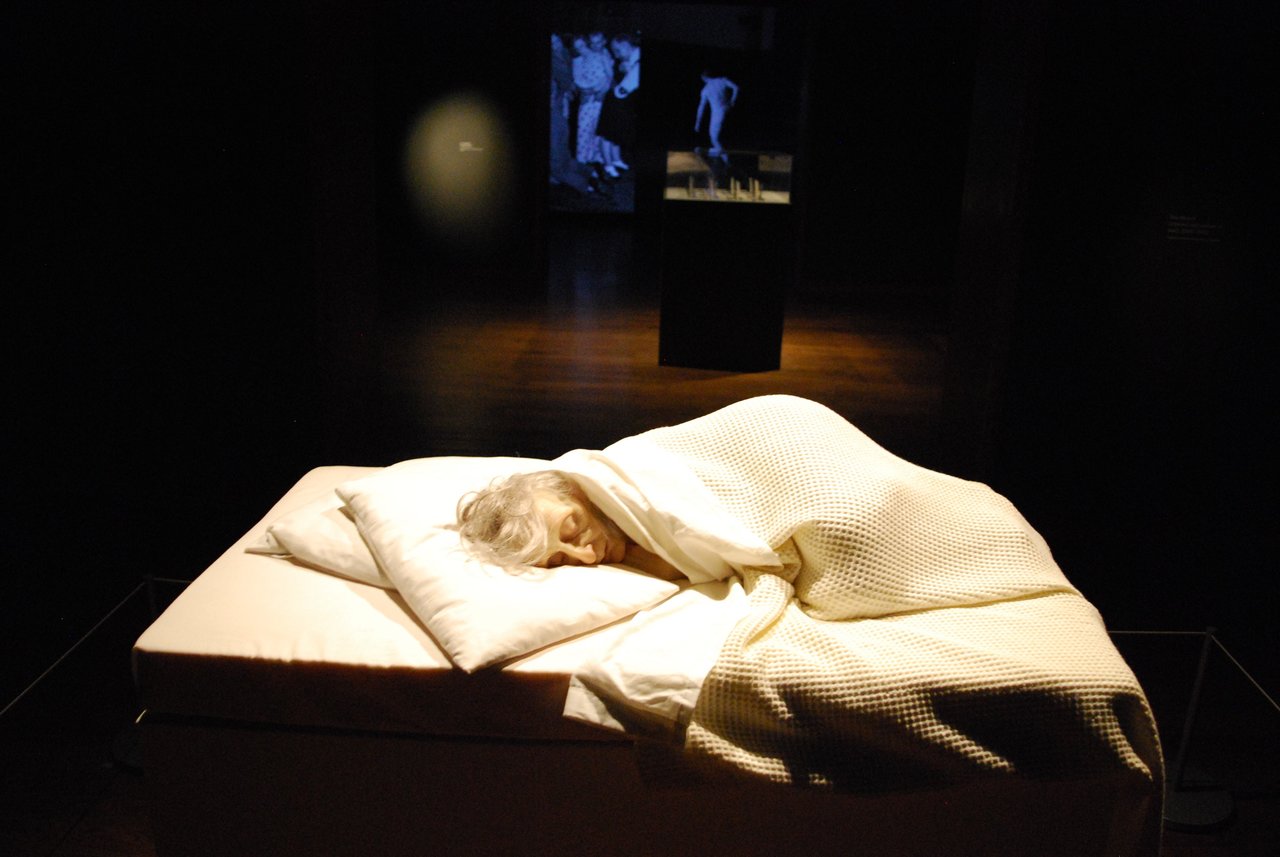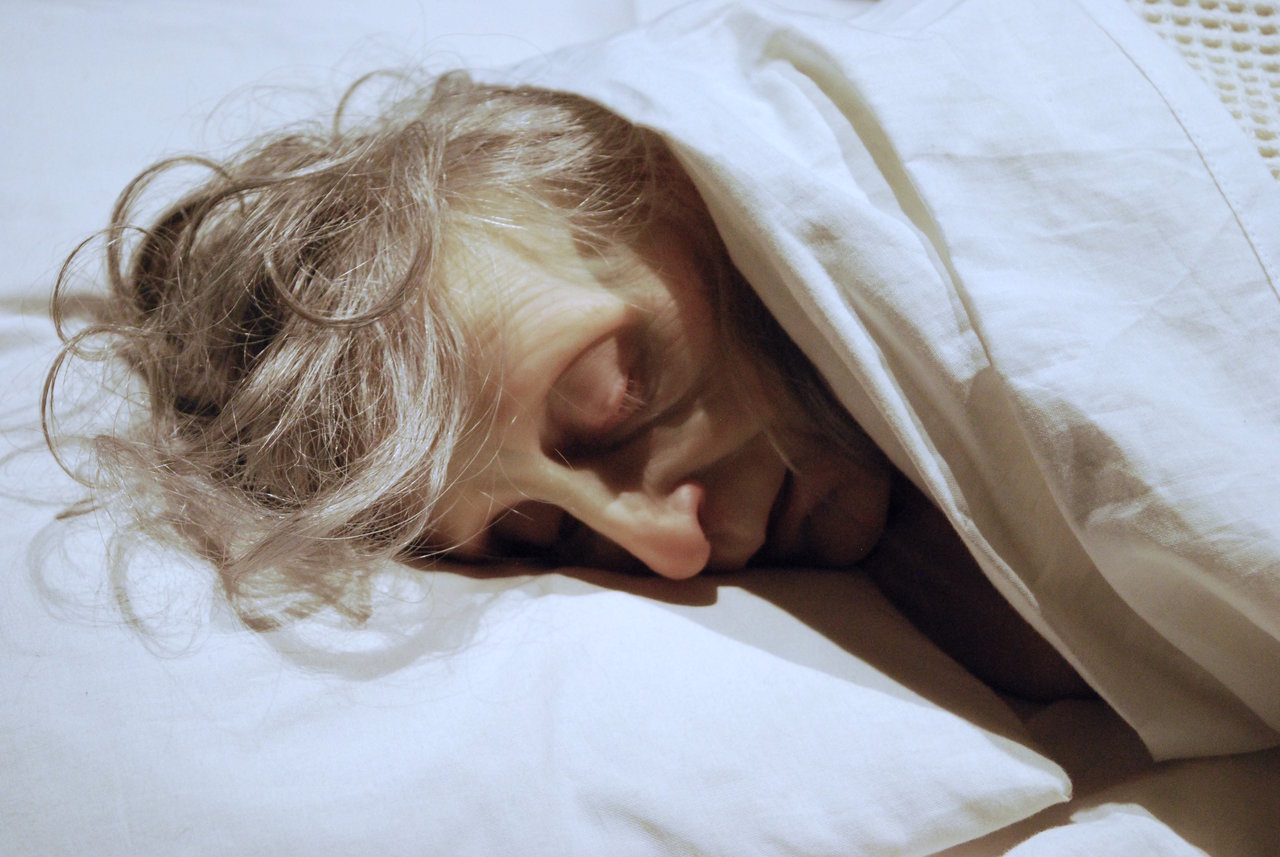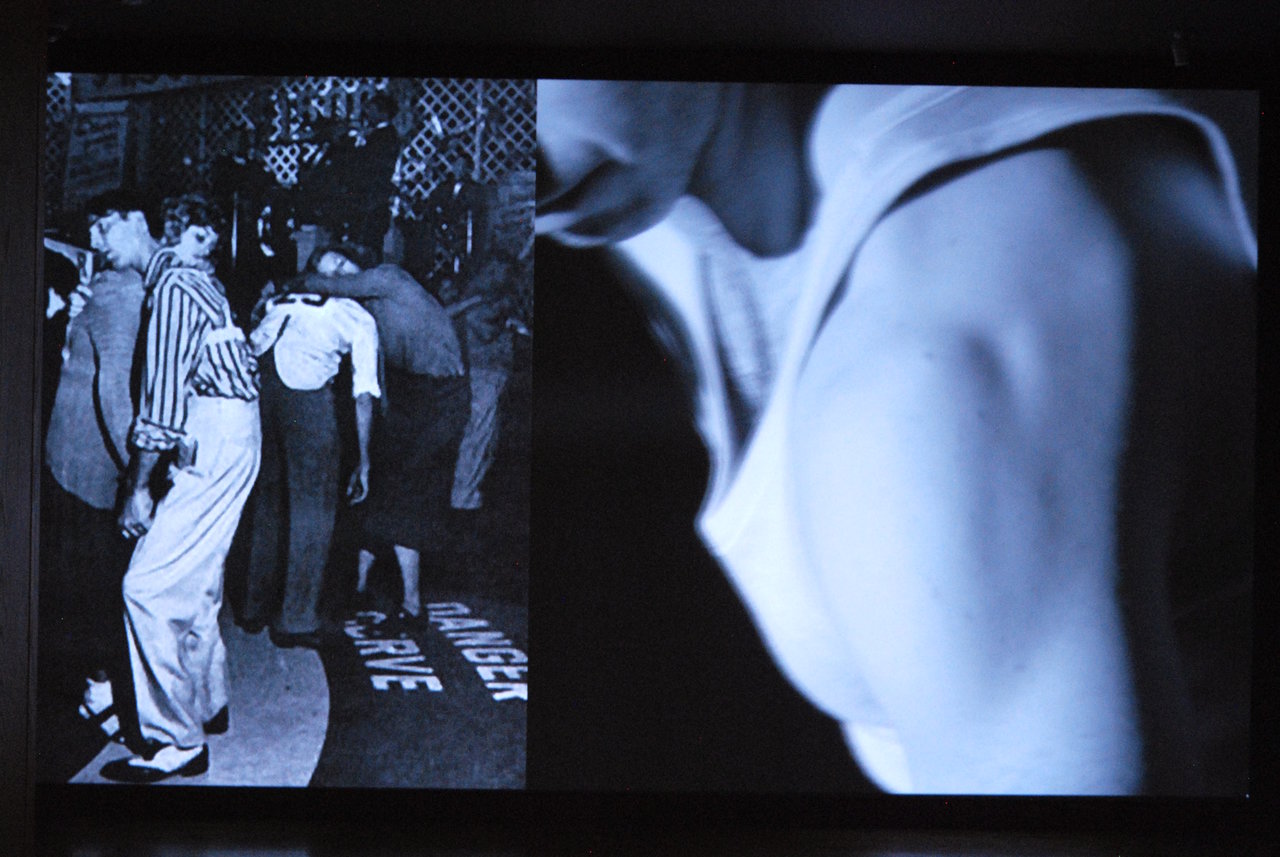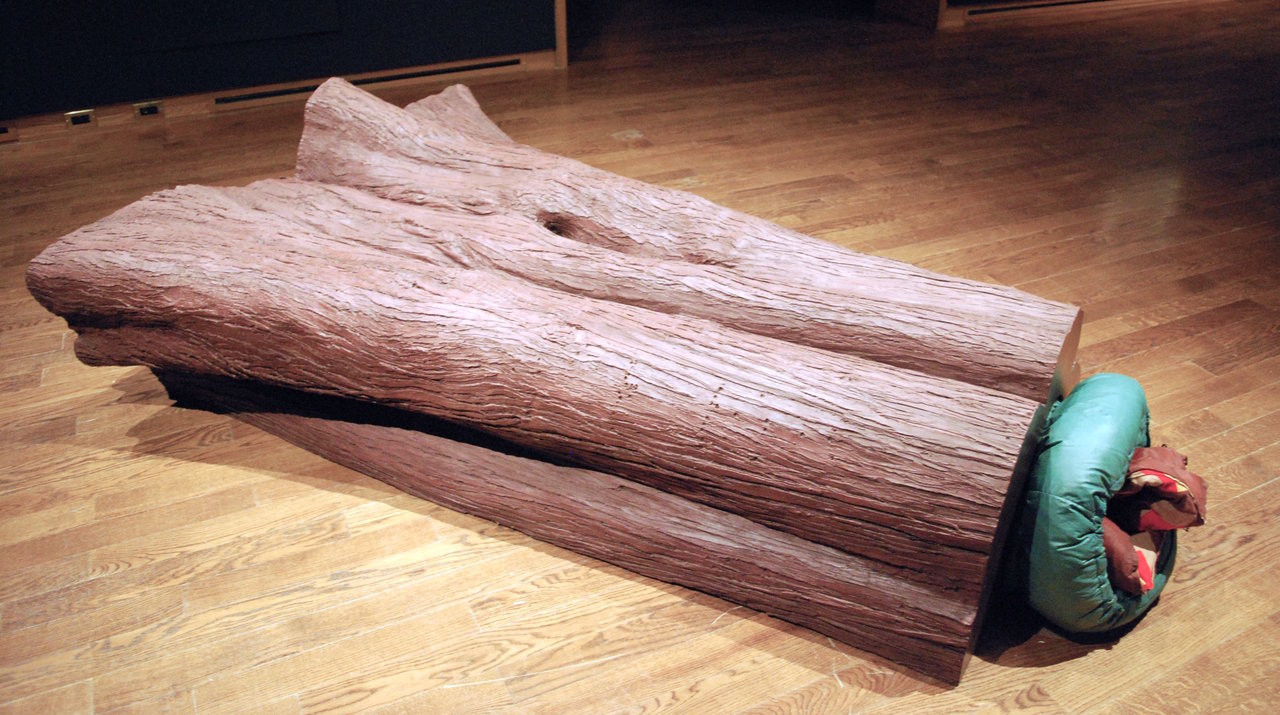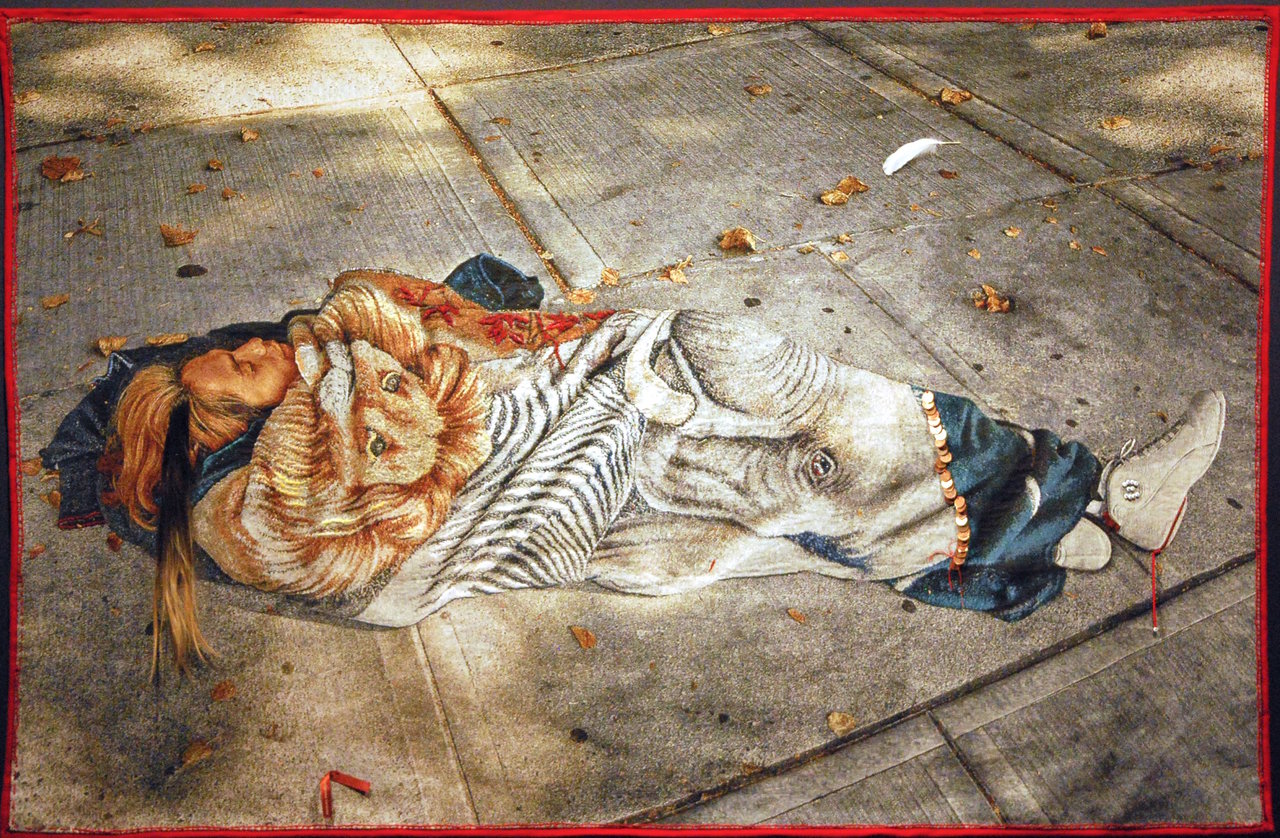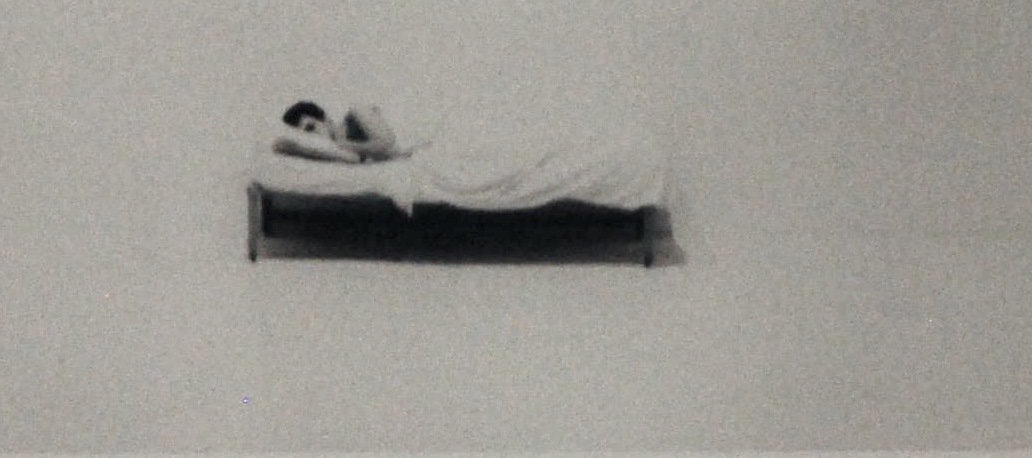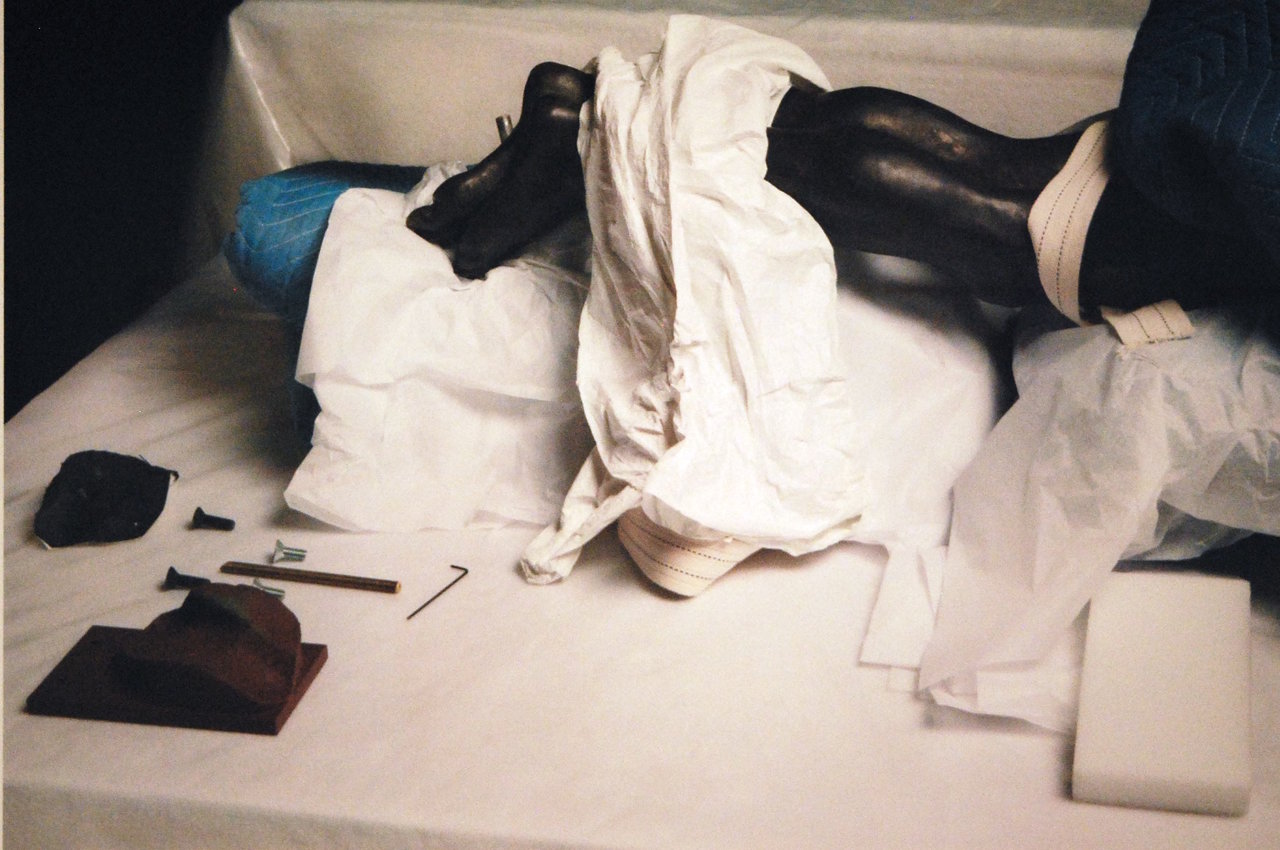Figures of Sleep is one of the coziest – and one of the hardest to photograph – exhibitions. Both University of Toronto Art Centre and Justina M. Barnicke Gallery are dimmed down, with soft lighting warming up each artwork. It is a massive exhibition featuring nineteen international and national artists, including Rebecca Belmore, On Kawara, Ron Mueck, and Tehching Hsieh.
Installation view of Figures of Sleep with Ron Mueck, Untitled (front) and John Sasaki, A Rest (back)
In this comfortable and sleepy environment, curator Sarah Robayo Sheridan contemplates the role of sleep in the personal, social, and political. With postcards, On Kawara records the time he awoke everyday in “I Got Up, 14-31 May 1973.” These records of his habits are sent back to himself as he travels.
On Kawara, I Got Up, at 9.05 A.M., May 15 1973
Beside Kawara’s work is one of Ron Mueck’s famous hyperrealist sculptures. “Untitled (old woman in bed)” is realistic to the point of creepy and visceral. The old woman is very small, sleeping on an elevated bed in a fetal position. Facing away from the entrance, only her face is visible. Disheveled, aged, and exhausted, the woman sleeps with a lightness that makes it uncomfortable to stare for too long because she might just open her eyes. Heightened by her smallness and her oldness, we are reminded of the vulnerability that sleep forces us into.
Ron Mueck, Untitled (old woman in bed). 2000-2002. Collection of the National Gallery of Canada
More bodies are showcased opposite Mueck’s work. Jon Sasaki’s “A Rest” is a video installation juxtaposing old black and white photographs with a video of a lone dancer. The dancer on the right imitates the poses in the photograph, except without a partner. Over and over again the dancer attempts to push his body to recreate the poses that only possible by lumping over and holding onto someone. The awakened body desperately attempts to recreate the sleeping body to no avail.
John Sasaki, A Rest, 2016, video. Courtesy of the artist and Clint Roenisch Gallery, Toronto
Beyond, a massive log of wood greets visitors. It sits on the floor, occupying space. On one end is a smooth plastic cross-section and on the other is a rolled up sleeping bag stuffed into the log. Liz Magor’s “Burrow” exists in ambiguity. It reminisces the outdoors, but the sleeper is missing. A sense of risk lurks behind and the safety of the outdoor sleeper is questioned.
Liz Magor, Burrow, 1999. Collection of the Vancouver Art Gallery
From here the space transitions smoothly to Rebecca Belmore’s “Dream Catcher.” Hung at the end of the main space, this textile piece is positioned as the exhibition’s central piece. The fabric displays a person sleeping on a sidewalk, which, unfortunately, is a familiar sight. Wrapped in a bright animal-patterned blanket, the sleeper seems to be in a deep slumber. As Sheridan says, there is a “telescoping effect as the poignant details become visible.” Sewn into the digitally-produced tapestry are small highlights such as a strand of hair, feather, pennies, and a small ribbon with the words “indigenous genocide”. As part of a private collection, “Dream Catcher” usually sits on a bed. This effect of homelessness permanently situated on a bed is particularly interesting. Fusing the public sphere with the private sphere, Belmore addresses the complex sociopolitical issues of being homeless and being indigenous.
Rebecca Belmore, Dream Catcher, 2014. Collection of John Cook, Ottawa
A piece that also addresses complex issues in sleep is the documentation of Chris Burden’s performance, “Bed Piece”. In 1972, Burden spent 22 days in a bed in a gallery. During a time when performance art was yet to be widely recognized, Burden perseveres and alludes to the inability to get out of bed. The loneliness and immobility stemming from issues such as illness or depression is embodied in his performance piece.
Chris Burden, Bed Piece, 1972. Courtesy of Ronald Feldman Gallery, New York
Figures of Sleep is justified in its sizable exhibition. The discourse of sleep is varied and endless: from Chris Curreri’s “Corpus” – which connects archive with sleep by looking at ‘sleeping’ artworks in storages – to Tehching Hsieh’s “Time Clock Piece” – which pushes the limits of sleeplessness by standing in front a camera and clocking in every hour for one whole year.
Chris Curreri, Corpus, 2015. Courtesy of the artist and Daniel Faria Gallery, Toronto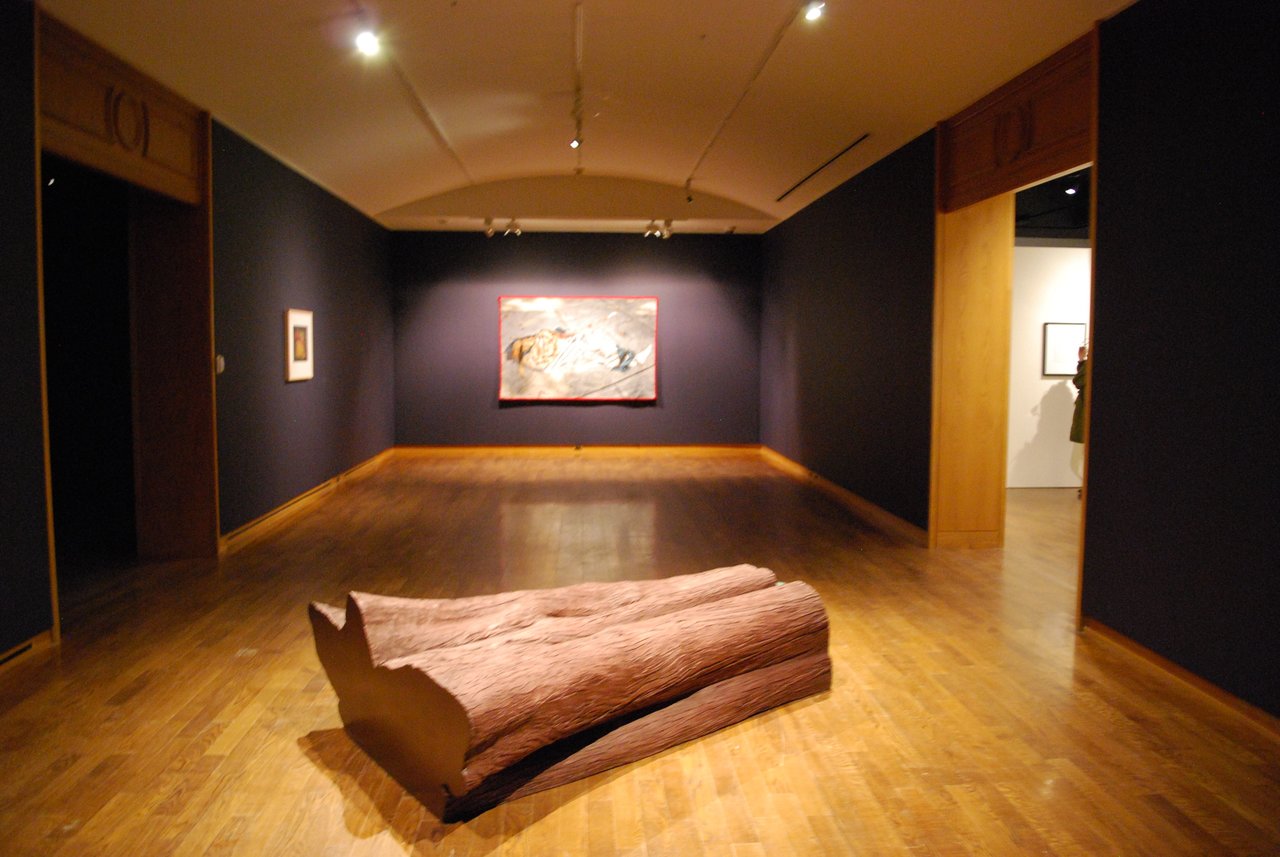
Installation view of Figures of Sleep with Liz Magor, Burrow (front)
This show’s contemplation of what sleep means for individuals as our society comes to a time where exhaustion is a medal to be worn in the race of productivity and capitalism. It is hard to tell whether this will change anytime soon, but Figures of Sleep reminds us of the importance of rest without the shallowness of today’s self-care messages.
Text and photo: Sunny Kim
*Exhibition information: January 17 – March 3, 2018, Art Museum University of Toronto, Justina M. Barnicke Gallery, 7 Hart House Circle, Toronto. Gallery hours: Mon – Fri, 12 – 5; Sat, 1 –5 pm.

